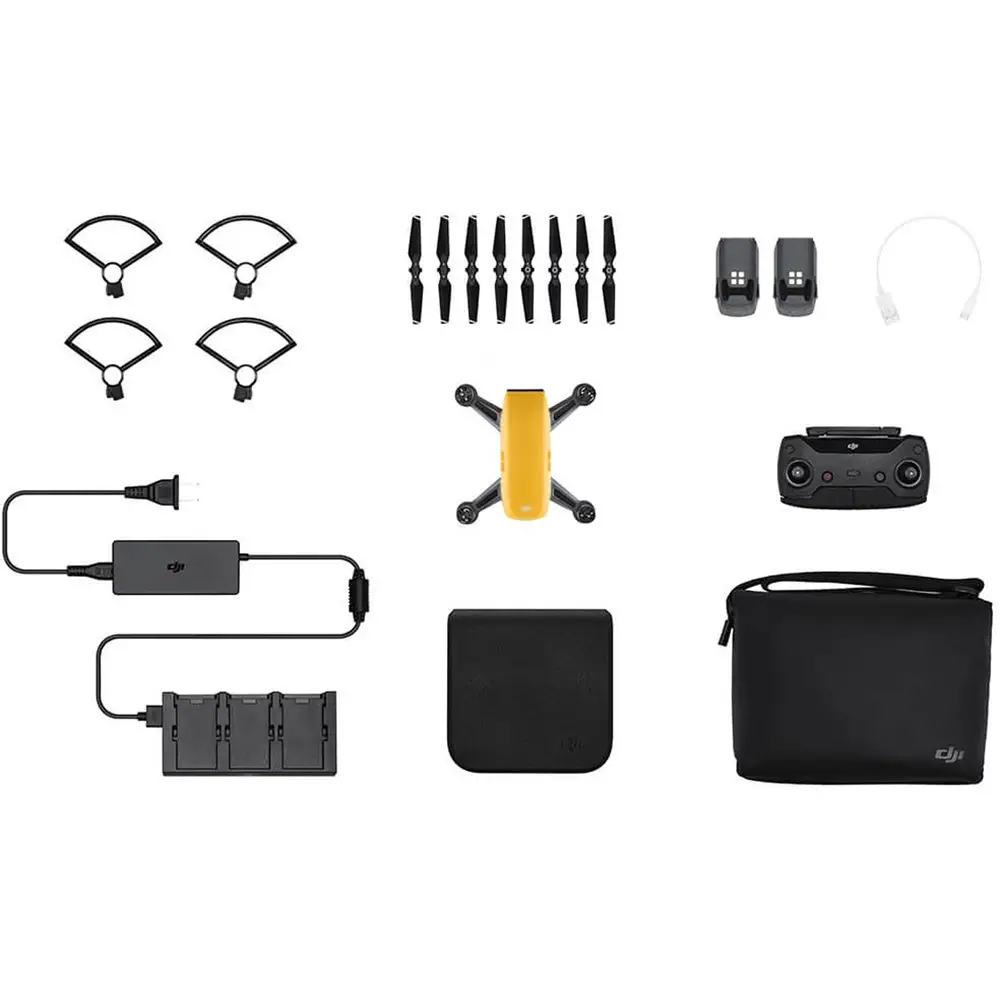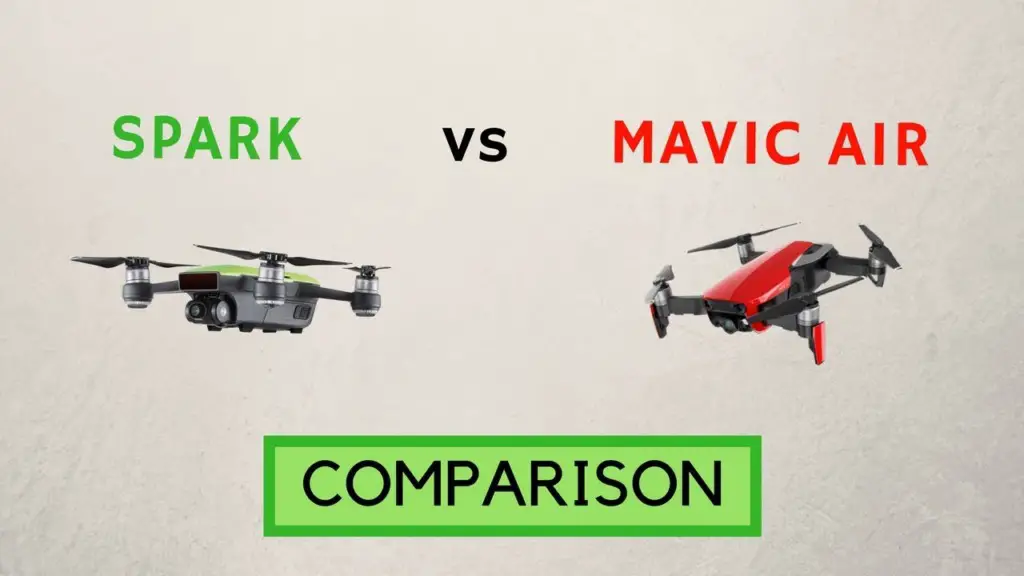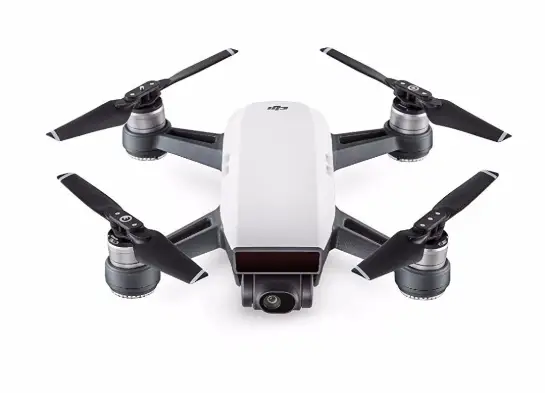After the launch of DJI Spark this year, drone users have grown significantly. Spark made the drone very compact and affordable at the same time.
DJI Spark can fit in your palm. This is a drone that kids, adults, and professionals can use. The drone has superb image quality, and there is no drone near it at this size and price range.
Today, in this article, we will discuss everything you should know about this drone.
We will also compare the drone with Mavic Air and Phantom 3.
So, read the whole article thoroughly. If you have any questions, don’t forget to let us know in the comments below.
I love this drone because it is appealing to all the users, whether you are a newbie or an expert.
Though the drone is very small and compact, which makes it easy to carry, there are some cons as well as it doesn’t have the 4k recording, three-axis gimbal that we will cover in some different sections.
Check the Best Price on Amazon
Table of Contents
DJI Spark Review
The DJI Spark comes with an advanced autonomous system that allows the drone to take care of everything by itself.
The main camera also has a forward-facing 3D sensing system that gives it an edge over others.
The drone also has GPS and GLONASS to have a smooth flight with high precision.
The drone has good altitude hold and can hover at the same place without moving to and fro in one direction.
Some cool features include intelligent modes like quick shots.
You can also set the drone on a set path, and it will follow the track smoothly. Below are some of the important features that you should know.
1- Quickshot Modes
It has four quick shot options that you can use. With the Rocket option, you can send a drone up in the air while the camera is pointing down.
With Dronie Mode, the drone goes away from the subject. In Circle Mode, the drone is rotated around the subject.
At last, comes the Helix mode that allows you to spiral the drone around the subject while going away from it.
2- Control by Mobile
You can control the drone with your smartphone. Though, while operating from mobile, there would be some constraints.
You can also the drone with gestures that take your control to the next level.
The remote controller offers better flight controls and more features that you might not be getting with a smartphone.
So, if you don’t want to use some advanced features, you can keep using the smartphone, no need to spend extra money on a controller.
3- Compact and portable
Compact size and solid build is the forte of this drone. Once the propellers are folded, you can put them inside your pocket as well. It is also light in weight; it feels as you are carrying a mobile in your pocket.
- The carrying box is also very handy; you get it once you purchase.
- It acts as a launchpad that eliminates the possibility of a crash while landing on the ground.
4- Gesture Control
The cool thing about the drone is that it can be controlled with gestures. When you control with your hand, it looks like you are a Jedi master.
This controlling mode is super smooth; you can steer it with your palm movement.
At the starting, this feature might look a bit tricky, but with practice, you can surely master it.
I recently watched Phillip Schofield trying to control it with gestures, and it was funny as hell.
The drone looks very small, but it can do wonders with its amazing features. Its self-flying autonomous capabilities stand out from the crowd.
5- Solid Build Quality
Spark has a solid rigid frame covered by a colored cap on the top for its build quality.
Cap comes in five different colors: red, white, green, yellow, and blue. Its quick-release props make folding and packing easier.
Propellers are made up of carbon fiber, making them almost unbreakable no matter how hard the crash is.
It also has an obstacle avoidance system that reduces the chances of any possible crashes.
The camera comes with a two-axis gimbal; you can tilt the camera straight down but not left and right.
Check the Best Price on Amazon
DJI Spark Cons
- It would help if you spent some extra bucks to get the Remote controller. Because, with mobile, you won’t be able to use all the features.
- Battery Backup is not that good. You need to carry one extra all the time.
- You have to buy the battery charger separately, which adds up the price again.
- The drone only comes in white, so there is no other variant to choose from.
- It doesn’t have a 4k Camera, and you won’t be able to shoot in raw format as well.
More DJI Spark issues here.
DJI Spark Technical Specifications
| DJI Spark | Specifications |
|---|---|
| Camera Resolution | 12MP |
| Take-off weight | 300g |
| Drone Dimensions | 143x143x55mm |
| flight time | 16 minutes (Maximum) |
| Speed | 50km/h (31mph) [Max with controller] |
| Gimbal | 2-axis mechanical |
| video resolution | 1080/30p Max |
| Image formats | Jpeg |
| Bitrate | 24 Mbps |
DJI Intelligent Flight Modes
DJI Spark Setup & Tutorial

In this section, we will focus on Spark Setup. It is easy to use and quick to fly.
Firstly, you have to install the DJI Go 4 application on your smartphone to start this drone.
The app is completely free and available for Android and iOS.
- Then, you have to register for the DJI account. If you already have one, you can directly login into it.
- Then insert the battery. Then, power it on by holding the power button for 3 seconds. It will turn on the battery; the drone power can be turned on by pressing it for 9 seconds. You will hear a continuous beep once the drone power is on.
- Connect the drone with a smartphone through WiFi. If you are doing it for the first time, you need to enter the password that you will find in the battery compartment.
- Once you are connected to WIFI, open the application on your smartphone. If there is an update pending, it will be done. The firmware update is mandatory to use all the features; you can’t skip it.
- Then, connect the Remote Controller’s WiFi with the smartphone. This, you will find at the backside of the remote controller.
- Then, a popup will come on the smartphone to notify that everything is connected. If still you are facing the problem, repeat the steps from the beginning.
Things to keep in mind before taking it off
Take Off
This is one of the most important points for drone flight. If you are a beginner, fly it in the open ground with no obstacles.
There are three different ways you can take off the drone.
You can manually take it off, do the autonomous flight, or go for gesture control.
Landing Pad
If you are a beginner, make sure you have a fixed point for taking off and landing the drone. You can’t just land it on an uneven place.
You can also use the drone carry case as landing gear. Avoid the sandy beach and grassy field for safety reasons.
If you are using it with gesture mode, you can launch it with the help of your palm.
When using the gesture mode, put the drone facing you and double-tap the power button.
Gesture Control is fun
This is the funniest part of this drone. In the starting, this mode will seem tricky, but once you master the gesture control, it’s going to be fun.
Also, understand the LED signals, what do they mean. It would give you clarity about the drone and control as well. Below are some of the color indications in gesture control mode.
- IF LEDs are Red: It means the drone didn’t lock the subject till now. It won’t follow you.
- If LEDs are yellow: It means the camera is trying to locate your palm.
- IF LEDs are green: It means the camera has locked your palm, and now, you can control it with a gesture.
DJI Spark vs. Mavic Air

In this section, we will talk about Spark Vs. Air. Many people have been finding this confusing. Which drone is better?
We will try to cover all the important aspects of both of them. Then, you can decide which drone is the best choice for you.
1- Build Quality & Design
Let’s talk about Spark first. It is smaller than air, and the material quality is decent, but it’s not as good as air, and that’s why it is cheaper than it.
While Mavic Air feels more premium and comes in better material quality.
When you fold both the drones, the size is almost similar. They are very small, fit in your palm, and easy to carry with.
If we compare the gimbal, then Spark lacks as it comes with a two-axis gimbal while Mavic air flaunts its three-axis stabilization.
2- Flight Time
The tiny Spark is around five minutes shorter than the Air.
The Mavic Air can fly up to 21 minutes while Spark manages to fly up to 16 minutes in excellent weather.
3- Camera capabilities
If you compare the camera capabilities, then Mavic Air is the clear winner. The Mavic Air comes with three-axis stabilization and can record in 4k, while Spark can only record up to 1080 30fps.
In Spark, you can’t move the camera left and right, but you can tilt it completely down. The DJI Spark’s FOV is equal to 35mm film.
Air gives you a buttery smooth image with its high quality and camera and stabilization. So, here no doubt, Mavic Air is the winner.
4- Obstacle Avoidance
Obstacle Avoidance is also a very important part of a drone. Both drones have completely different avoidance systems.
For obstacle detection, the Spark uses infrared sensors, and with its detection, it decides where to fly.
This infrared is not very advanced technology; it gives the drone a basic idea instead of detailed information.
One camera is mounted at the bottom of the drone, but that’s not part of the obstacle avoidance system.
The Mavic Air uses advanced technology with two inbuilt cameras, which allows the drone to see the world as a human would see with naked eyes.
Feeds of both cameras are put together to give the drone an in-depth map of the surrounding, and that’s how a drone avoids all possible collisions.
DJI Spark vs. Mavic Air: Which Is Better?
The Mavic Air is costlier than the Spark, but that is worth its price. The Mavic Air has advanced features that make it more solid and high-end.
So, if you have extra money to spend, you can surely go for Mavic Air; otherwise, inexpensive Spark should be the right choice for you.
DJI Spark is good for beginners and has amazing features to experiment with.
Check the Best Price of DJI Air on Amazon
DJI Spark vs. Phantom 3

This section will discuss the difference between DJI Spark and Old Phantom 3.
Spark is better in some areas, while Phantom 3 is the winner in some areas. So, without wasting any time further, let’s dive into the specifics of these drones.
1- Controllers
The Phantom 3 comes with a huge controller, two antennas at the top with buttons, and steering sticks. On top of that, you have a mount for a smartphone as well.
You can also attach the tablet and see the live view while the drone is flying. The control is very smooth, and it takes around 90minutes to get fully charged and can be used for two and a half hours.
While for Spark, you don’t even need the controller. You can control it with a smartphone and even by gestures as well.
Though, you won’t be able to use all the features with a smartphone. If you want to use all the advanced features, you need to buy the controller separately.
2- Speed
All the Phantom 3 quadcopters can fly up to 35.8mph while Spark can go up to 31mph though it won’t make any difference unless or until you are using these drones for racing purposes.
Phantom 3 can descend at 6.7mph and ascend at 11.2mph max.
3- Flight Duration
Phantom 3 has a better flight duration than DJI Spark. The DJI Spark comes with only 16minutes of flight time. The Phantom 3 gives you more time to take cinematic shots.
If you are thinking of buying a spark, you should always buy an extra battery.
4- Size
The size is one of the drone aspects where Spark is the clear winner. The DJI spark weighs only 300grams, and the diagonal distance is around 170mm.
However, all the phantom three models weigh around one and a half, and they are bulkier in size.
So, if the portability and ease of carrying it are your topmost priority, then Spark should be the right choice for you.
Check the Best Price of DJI Phantom 3 on Amazon
FAQs
Does the DJI spark come with a controller?
No, you don’t get a controller with DJI Spark. The drone only costs around $499. For the controller, you need some extra bucks. You can also buy the combo to get all the required accessories.
In Combo, you will get a controller, extra propellers, battery, a quad charger, prop guards, power cable, USB cable, and shoulder bag.
How long does it take to charge the DJI spark?
Using the standard USB charger, it would be fully charged in 80 minutes. If you have the charging hub, the single battery will take 54 minutes, 55 minutes for two batteries, and 85 minutes for three batteries.
Does DJI Spark have internal memory?
No, it doesn’t have internal memory. You will get data stored in your DJI Go app directly, and from there, you can export it to your smartphone.
How to reset DJI Spark WiFi?
After connecting the drone with the app, you can do the reset. Just hold the power button until the drone beeps three times. A single beep will take around 9seconds.
How high can the DJI spark fly?
You can fly the drone, 13000 above sea level. It can fly smoothly, even in high winds as well.
Is DJI Spark waterproof?
It’s not waterproof. But it’s a little bit resistant to water.
How fast does the DJI spark go?
DJI Spark can fly up to 31 mph while flying it in sports mode.



